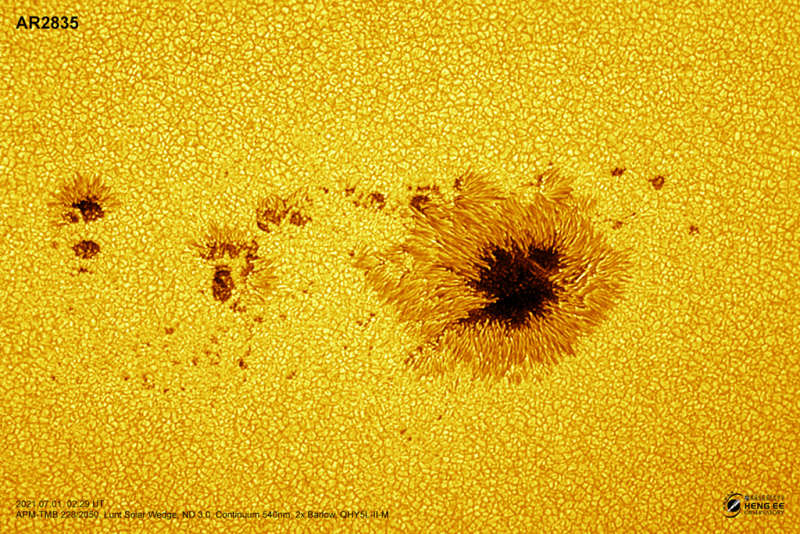
|
Credit & Copyright: Michael
Teoh,
Heng Ee Observatory, Penang, Malaysia
Explanation:
Awash in a sea of
incandescent plasma
and anchored in strong
magnetic fields,
sunspots are planet-sized dark islands in
the solar
photosphere,
the bright surface of the Sun.
Found in solar active regions, sunspots look
dark
only because they are slightly cooler though,
with temperatures of about 4,000
kelvins
compared to 6,000 kelvins for the surrounding solar surface.
These sunspots lie in active region AR2835.
The largest active region
now crossing the Sun,
AR2835 is captured in this sharp telescopic close-up from July 1
in a field of view that spans about 150,000 kilometers
or over ten Earth diameters.
With powerful magnetic fields,
solar
active regions
are often responsible
for solar flares and coronal mass ejections, storms which affect
space weather
near
planet Earth.
|
January February March April May June July August September October November December |
| ||||||||||||||||||||||||||||||||||||||||||||||||
NASA Web Site Statements, Warnings, and Disclaimers
NASA Official: Jay Norris. Specific rights apply.
A service of: LHEA at NASA / GSFC
& Michigan Tech. U.
Based on Astronomy Picture
Of the Day
Publications with keywords: Sun - sunspot
Publications with words: Sun - sunspot
See also:
- APOD: 2025 December 7 Á The Sun and Its Missing Colors
- APOD: 2025 May 21 Á International Space Station Crosses the Sun
- APOD: 2025 March 16 Á Venus and the Triply Ultraviolet Sun
- APOD: 2024 September 2 Á A Triangular Prominence Hovers Over the Sun
- APOD: 2024 August 18 Á A Solar Prominence Eruption from SDO
- APOD: 2024 August 4 Á Gaia: Here Comes the Sun
- APOD: 2024 July 28 Á Sun Dance
